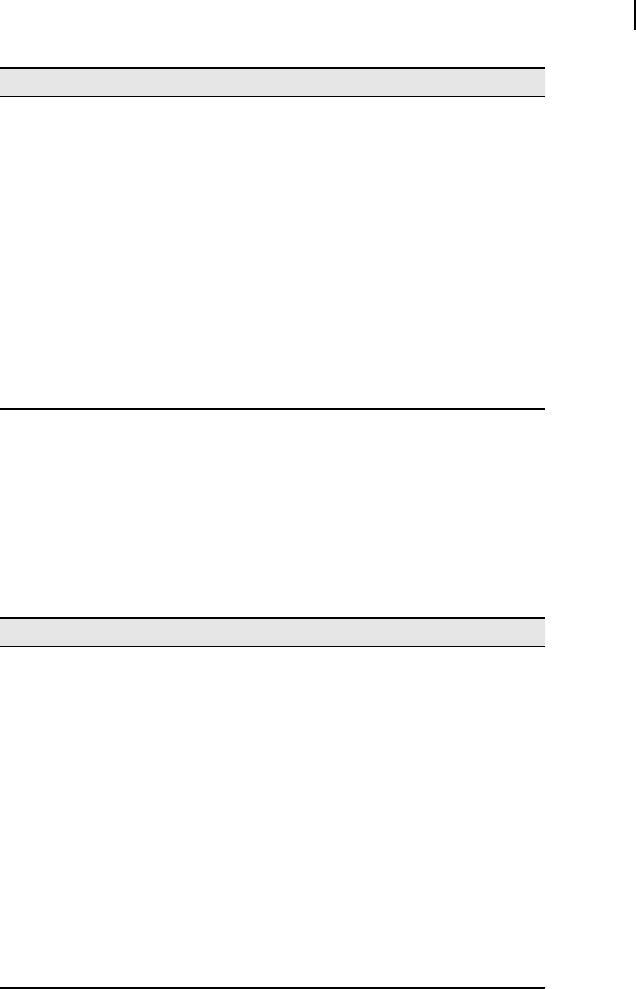
456 Computer Architecture and Organization
The special feature of Format 3 (branch instructions) is bit-29, the annul bit . This bit-information
helps in compensating the delay generated during execution of conditional branches. If this bit is
cleared, then the instruction following the branch instruction is always executed regardless of whether
the branching has taken place or not. If the bit is set, then the branch-instruction-following-instruction
would be executed only if the branching takes place, otherwise not. In Format 3, four bits are reserved
to test four condition ags and any combination of these four bits may be considered for branching. A
24-bit wide two’s complement PC-relative address for branching is generated from the 22-bit address
within the instruction and adding two zeros at the least signi cant end of these 22 bits.
The last format, i.e., Format 4, is exclusive for call instruction supplying 30-bit relative address. Just
like the previous case, two zeros are added at the end of these 30 bits to obtain the target address. To
conclude our discussions, the complete integer instruction set of UltraSPARC is presented now.
B.8 INSTRUCTION SET
All user available instructions of UltraSPARC are presented in following six tables. Floating point
instructions, processor reset instructions and cache management instructions are not included here. Note
that all arithmetic and Boolean instructions are register oriented without any need to get operand from
memory or store the result of the operation in memory. In these cases processor registers are to contain
necessary operands and accommodate results. Moreover, these instructions allow three-register format.
So two source registers and one destination register (result storing register) may be accommodated
within these instructions, using Format 1a.
Table B.1 presents load and store instructions dealing with 8-, 16-, 32- and 64-bit data sets. When
smaller number of data set bits 8 or 16 are loaded within 32-bit registers, most signi cant bits may be
lled with either all 1s or all 0s. In this and all other tables, ADDR indicates a valid memory address,
DST indicates the name of the destination register and SRC indicates the source register.
Figure B.5 Instruction formats of UltraSPARC
31 30 29 28 27 26 25 24 23 22 21 20 19 18 17 16 15 14 13 12 11 10 9 8 7 6 5 4 3 2 1 0
Destination Opcode Source 1 Source 2
3-Register
Format 1a
Floating point operator
31 30 29 28 27 26 25 24 23 22 21 20 19 18 17 16 15 14 13 12 11 10 9 8 7 6 5 4 3 2 1 0
Destination Opcode Source 1
Immediate
Format 1b
Immediate constant
31 30 29 28 27 26 25 24 23 22 21 20 19 18 17 16 15 14 13 12 11 10 9 8 7 6 5 4 3 2 1 0
Destination
A
Condition
Opcode
PC-relative displacement
PC-relative displacement
Opcode
SETHI
Format 2
Immediate constant
31 30 29 28 27 26 25 24 23 22 21 20 19 18 17 16 15 14 13 12 11 10 9 8 7 6 5 4 3 2 1 0
31 30 29 28 27 26 25 24 23 22 21 20 19 18 17 16 15 14 13 12 11 10 9 8 7 6 5 4 3 2 1 0
Branch
Call
Format 3
Format 4
0
1
Z02_GHOS1557_01_SE_C17_App_B.indd 456Z02_GHOS1557_01_SE_C17_App_B.indd 456 4/29/11 5:40 PM4/29/11 5:40 PM

SPARC and UltraSPARC 457
Instruction Brief description
LDSB ADDR, DST Load signed byte (8 bits)
LDUB ADDR, DST Load unsigned byte (8 bits)
LDSH ADDR, DST Load signed halfword (16 bits)
LDUH ADDR, DST Load unsigned halfword (16 bits)
LDSW ADDR, DST Load signed word (32 bits)
LDUW ADDR, DST Load unsigned word (32 bits)
LDX ADDR, DST Load extended (64 bits)
STB SRC, ADDR Store byte (8 bits)
STH SRC, ADDR Store halfword (16 bits)
STW SRC, ADDR Store word (32 bits)
STX SRC, ADDR Store extended (64 bits)
Table B.1 Load and Store instructions
Table B.2 presents the arithmetic instructions. Note the absence of increment by one and decrement
by one type instruction as those may be implemented by other available instructions for addition and
subtraction. In these and all other instructions, R1 indicates a source register and S2 indicates either a
source register or an immediate data.
Instruction Brief description
ADD R1, S2, DST Add
ADDCC R1, S2, DST Add and set icc
ADDC R1, S2, DST Add with carry
ADDCCC R1, S2, DST Add with carry and set icc
SUB R1, S2, DST Subtract
SUBCC R1, S2, DST Subtract and set icc
SUBC R1, S2, DST Subtract with carry
SUBCCC R1, S2, DST Subtract with carry and set icc
MULX R1, S2, DST Multiply
SDIVX R1, S2, DST Signed divide
UDIVX R1, S2, DST Unsigned divide
TADCC R1, S2, DST Tagged add
Table B.2 Arithmetic instructions
All shift and rotate type instructions are placed in Table B.3 . Note that in case of shift right logical ,
the least signi cant bit is shifted to most signi cant position after the shift operation, whereas for shift
right arithmetic , the least signi cant bit is lost and the most signi cant bit is copied to its old position
after shifting operation.
Z02_GHOS1557_01_SE_C17_App_B.indd 457Z02_GHOS1557_01_SE_C17_App_B.indd 457 4/29/11 5:40 PM4/29/11 5:40 PM

458 Computer Architecture and Organization
Instruction Brief description
SLL R1, S2, DST Shift left logical (32 bits)
SLLX R1, S2, DST Shift left logical extended (64 bits)
SRL R1, S2, DST Shift right logical (32 bits)
SRLX R1, S2, DST Shift right logical extended (64 bits)
SRA R1, S2, DST Shift right arithmetic (32 bits)
SRAX R1, S2, DST Shift right arithmetic extended (64 bits)
Table B.3 Shift and Rotate instructions
Six types of Boolean operations, namely AND, NAND, OR, NOR, XOR and XNOR are available
within Boolean instruction set presented in Table B.4 . In each case the operation may store the generated
conditions of the result if desired so.
Instruction Brief description
AND R1, S2, DST Boolean AND
ANDCC R1, S2, DST Boolean AND and set icc
ANDN R1, S2, DST Boolean NAND
ANDNCC R1, S2, DST Boolean NAND and set icc
OR R1, S2, DST Boolean OR
ORCC R1, S2, DST Boolean OR and set icc
ORN R1, S2, DST Boolean NOR
ORNCC R1, S2, DST Boolean NOR and set icc
XOR R1, S2, DST Boolean XOR
XORCC R1, S2, DST Boolean XOR and set icc
XNOR R1, S2, DST Boolean XNOR
XNORCC R1, S2, DST Boolean XNOR and set icc
Table B.4 Boolean instructions
Table B.5 presents all instructions related with program branching. Note that JMPL instruction may
also be used to implement a CALL instruction.
Instruction Brief description
BPcc ADDR Branch with prediction
BPr SRC, ADDR Branch on register
CALL ADDR Call procedure
RETURN ADDR Return from procedure
JMPL ADDR, DST Jump and link
SAVE R1, S2, DST Advance register windows
(Continued)
Z02_GHOS1557_01_SE_C17_App_B.indd 458Z02_GHOS1557_01_SE_C17_App_B.indd 458 4/29/11 5:40 PM4/29/11 5:40 PM
..................Content has been hidden....................
You can't read the all page of ebook, please click here login for view all page.
